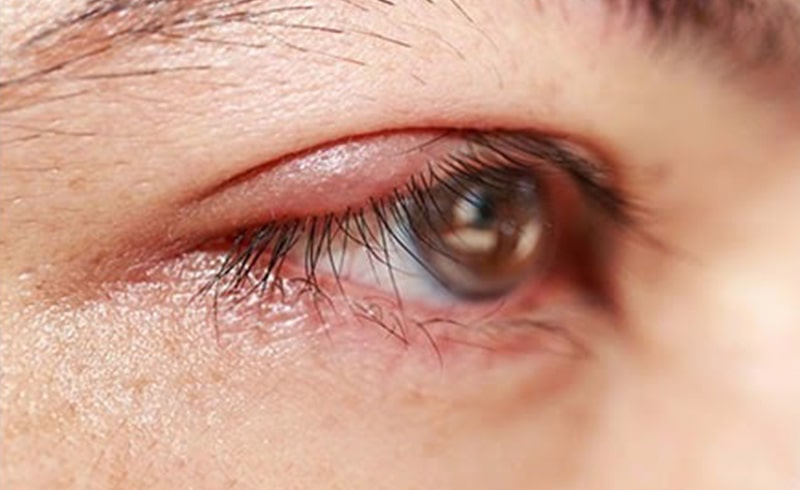
If a person suffers from an inflamed eyelid with dandruff-like scales on the eyelashes, they probably have blepharitis. It affects people regardless of their age and gender, with a high prevalence rate. Nearly 30% to 50% of patients who approach eye clinics have this condition. In this blog, we will examine this ailment.
What is blepharitis?
It is an inflammation that affects the eyelids, which become itchy, red, and irritated. It also causes dandruff-like scales to form on the eyelashes. Bacteria commonly cause it; however, scalp and skin conditions such as dandruff and rosacea can contribute.
There are two types; anterior blepharitis and posterior blepharitis. The former occurs at the outside front edge of the eyelid, where the eyelashes are. It is usually caused by excessive bacteria or dandruff in the scalp or eyebrows. The latter occurs along the inner edge of the eyelid, which meets the eyeball. It is caused by glands producing oil irregularly, which allows bacteria to thrive. It can also develop due to scalp dandruff or rosacea.
What are the symptoms?
The following symptoms may occur when one suffers from this condition.
-
Feeling like there is something in the eye
A person might feel like something is in their eye even if nothing is.
-
Sensitivity to light
Their eyes may become more sensitive when exposed to light. A person will squint or turn away, as it would irritate them.
-
A burning sensation in the eye
They may feel like their eyes are burning, and it will not be easy to calm them down using water or compresses.
-
Their vision may become blurry
They may be unable to see clearly even if they previously could, without any issue.
-
Their eyes may feel dry
Due to the inflammation, their eyes will feel dry and irritated.
-
Red eyes
Their eyeballs and the edges of their eyelids will redden due to the inflammation and irritation caused by the condition.
-
Crusty eyelashes
Due to the build-up of dandruff-like particles, their eyelashes will feel crusty. It is especially evident when a person wakes up in the morning.
How can it be diagnosed?
Everyone, including the best eye doctor, recommends a comprehensive eye exam to determine whether blepharitis is causing a patient’s symptoms. The exam will focus primarily on the eyelids and the surface of the eyeball.
Before the examination, they will examine a patient’s history to rule out any general health problems contributing to the symptoms. Afterward, they will conduct an external examination of the eye, focusing on the structure of the eyelids, the texture of the skin, and the appearance of the eyelashes. They will also use bright light and magnification to evaluate the margins of the eyelids, meibomian gland openings, and the base of the eyelashes. They will further assess the quality and quantity of tears to identify if there are any abnormalities.
How can it be treated?
Treatment can differ depending on the type of blepharitis a person has. However, most doctors recommend keeping the eyelids clean and removing any crust by using warm compresses to loosen the scales. Then, one should gently scrub the eyelids with a mixture of warm water and baby shampoo or a prescribed cleansing product.
If the glands are blocked, a person must massage the eyelids to clear the accumulated oil. They will need lubricating ointments or artificial tear solutions if they suffer from dry eyes. They will also need to take medication for dandruff and rosacea if they are contributing to blepharitis. If bacteria are causing the condition, a doctor will prescribe antibiotics to stop the infection.
Blepharitis, while treatable, can always recur. Therefore, to control the condition, people must maintain good hygiene habits. They must also consult with the Spanish Eye Clinic and receive treatment when they notice symptoms. If left untreated, it can cause dry eyes and lead to the formation of chalazion and styes. In the worst case, it could cause corneal ulcers or vascularization.
What Causes Blepharitis?
Blepharitis is a common eye condition caused by inflammation of the eyelids, often at the base of the eyelashes. It can be triggered by bacterial infections, clogged oil glands in the eyelids (meibomian gland dysfunction), or skin conditions like rosacea and seborrheic dermatitis. Allergies, exposure to environmental irritants, and poor eyelid hygiene can also lead to blepharitis. Symptoms typically include red, swollen, itchy eyelids and crusting around the eyelashes.
Common Myths About Blepharitis
There are several myths surrounding blepharitis that can lead to misconceptions. One common myth is that it’s contagious—in reality, blepharitis is a non-contagious condition that usually stems from internal factors like blocked glands or skin issues. Another misconception is that blepharitis always resolves on its own without treatment. In truth, proper management and hygiene are often necessary to control symptoms and prevent flare-ups. Additionally, some believe that only people with poor hygiene develop blepharitis, but even individuals with excellent hygiene can suffer from it due to underlying skin conditions or gland dysfunction.

